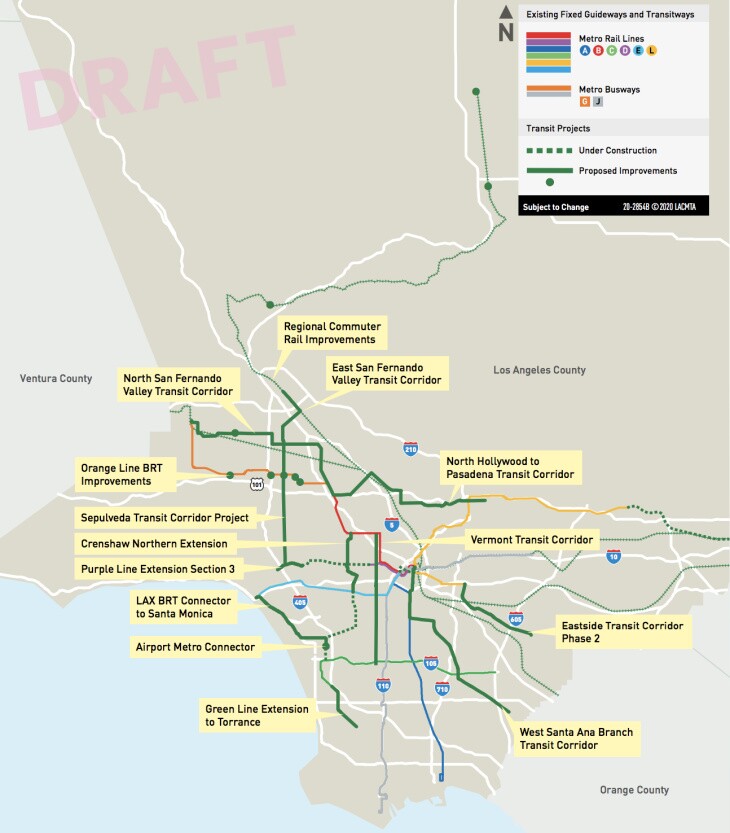With our free press under threat and federal funding for public media gone, your support matters more than ever. Help keep the LAist newsroom strong, become a monthly member or increase your support today.
LA Metro Has A Blueprint For Its ‘Transportation Revolution’ And Wants To Hear From You

What will it look like to get where you need to go in Los Angeles County in 2050?
L.A. Metro has outlined its vision for the future of public transit in a draft report, dubbed the Long Range Transportation Plan (LRTP). The agency is taking public comment on the plan through July 13. Metro's board of directors is expected to vote on the plan at the end of summer.
“The draft [LRTP] outlines what Metro is doing currently and what Metro must do for Los Angeles County over the next 30 years,” Metro spokesperson Rick Jager wrote on the agency’s website, adding that “current challenges” like the COVID-19 pandemic “present opportunities for Metro to take bold action and help achieve mobility improvements for the region.”
The agency’s blueprint calls for $400 billion to fund L.A. County’s “transportation revolution,” with nearly half of that money coming from county sales tax revenue. Another 28% is projected to come through state and federal programs.
The transit plan breaks down into four specific “priority areas”:
- Better transit
- Less congestion
- Complete streets
- Access to opportunity
Metro’s first goal is to “create a world-class transit system that is competitive with driving a private vehicle and that works for riders with different trip purposes and destinations.”

Enticing more people to take public transit would counter falling ridership the agency has faced in recent years — which has plummeted even more amid the pandemic.
It would also help Metro with its second goal: reducing the county’s infamous congestion. But that’s not the only strategy — Metro is also studying how congestion pricing, charging people to drive on certain high-traffic routes at high-demand hours, might work in L.A. County. The agency estimates the strategies outlined in the draft plan would shave an extra 31% off 2047 projections for hours spent in traffic.
Metro officials also estimate that enacting the plan will cut greenhouse gas emissions by 19% by 2047 (again, based on projected trends for that time period).
Here are a few other projects highlighted in Metro’s plan, some of which we’ve reported on previously:
- Expanding Metro's rail system to cover almost 240 miles
- Building bus-only lanes to expand Bus Rapid Transit in the region
- Expanding the ExpressLanes system
- Creating more bike and pedestrian paths, including along the L.A. River
- Improving equity among Metro riders, including a plan to address the "outsized burdens and risks" that women face on the system
You can explore the draft plan in full detail below and submit your feedback to Metro online, via email (metroplan@metro.net), phone (213-922-2833) or through the mail.
The full report has not been translated in Spanish, but an overview of the LRTP and a comment submission section is available online for Spanish speakers.
Our news is free on LAist. To make sure you get our coverage: Sign up for our daily newsletters. To support our non-profit public service journalism: Donate Now.







